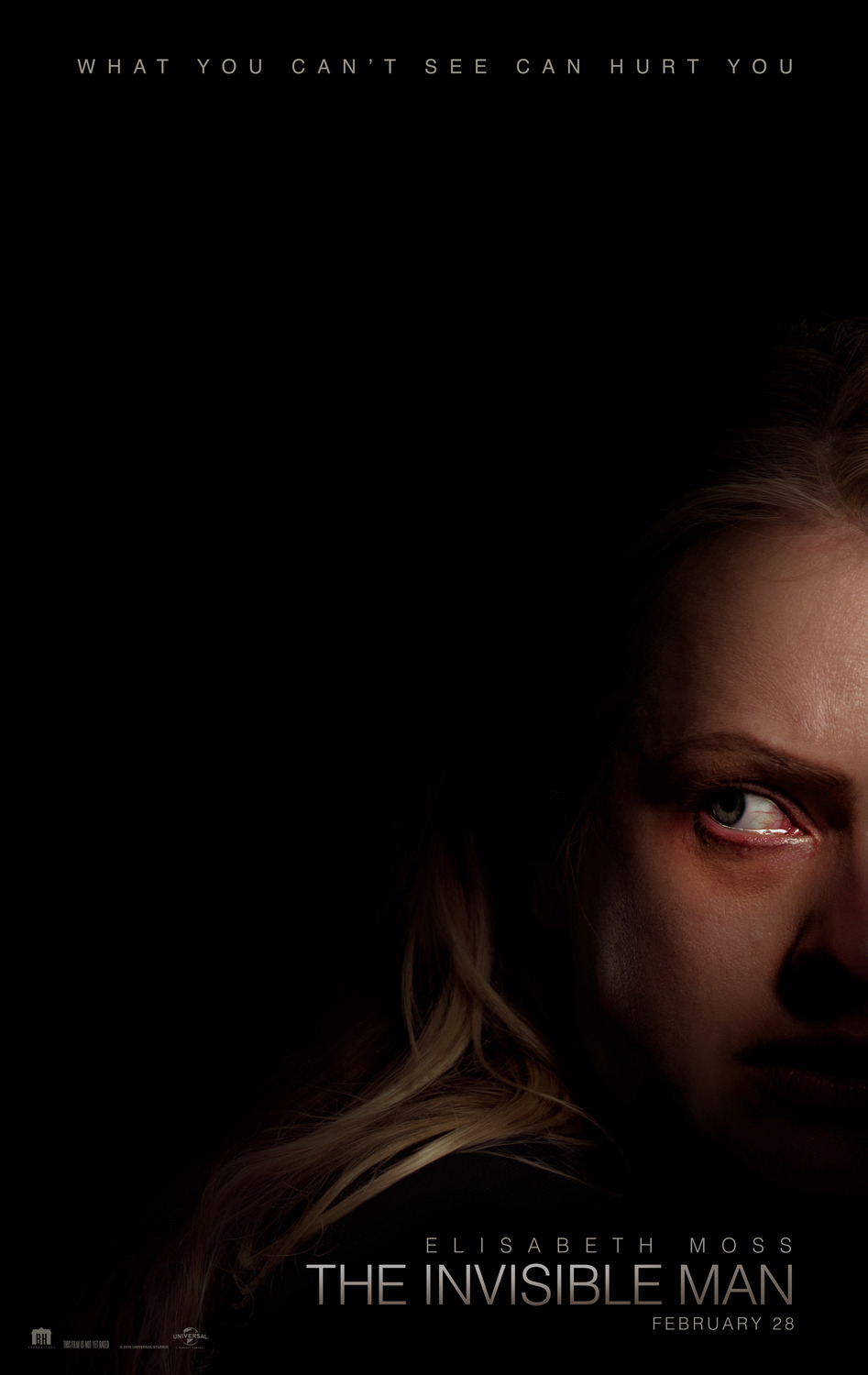In a time when “horror movie” has come to mean paranormal things crawling across a ceiling or spooks providing cheap jump-scares as they pounce out of a closet, it’s easy for an excellent, truly terrifying film like The Invisible Man to stand out. The film is credited as being based on the 1897 H.G. Wells novel, but the only similarities are the existence of an unseen man and a shared character name. Writer-director Leigh Whannell’s adaptation is a story and a concept unto itself, and it stands on its own as an instant classic in horror moviemaking. Smart horror moviemaking.
Elisabeth Moss is perfectly cast as Cee, a San Francisco architect who, when we meet her, is sneaking out of the bed she shares with her abusive husband Adrian (Oliver Jackson-Cohen). We’re barely thirty seconds in, and already we’re hooked without a line of dialogue spoken as Whannell cleverly and efficiently gives us all we need to know about this relationship.
After escaping, Cee is driven by her sister Emily (Harriet Dyer) to the house of mutual friend James (Aldis Hodge) and his teenage daughter Sydney (Storm Reid). Understandably paranoid, Cee can’t so much as walk out the front door of the house until she gets word a few weeks later that Adrian has committed suicide. Her serenity is short-lived, though, as unexplained things start happening in the house—the stove is turned up by itself, a knife disappears, the bed sheets are pulled to the floor—and she slowly comes to the realization that Adrian must somehow be behind it all.
By the time it’s revealed that her suspicions are correct and that Adrian is a mega-wealthy tech genius (with a fitting affinity for optics), the audience buy-in is complete, and the fear grows exponentially as Adrian’s gaslighting of his wife escalates to an unfathomable level. The old saying may well be “what you don’t know won’t hurt you”, but in Whannell’s more-than-capable hands, that gets thrown out the window and trampled to death in the front yard. It’s precisely what we don’t know that drives the terror permeating The Invisible Man.
With a combination of achingly slow camera pans and brilliant use of negative space, Whannell (with the help of cinematographer Stefan Duscio) invites us first-hand into Cee’s growing paranoia. There are several shots, for example, from Cee’s point of view of a room’s empty corner, where we know Adrian is standing—the only question is what will he do to her. And we literally never see it coming.
It’s a brilliant strategy and a clear demonstration of a writer-director believing in his audience and not feeling the need to rely on obvious, overt horror tropes to raise our collective blood pressure. Sound editor P.K. Hooker and composer Benjamin Wallfisch (doing his best Bernard Herrmann impression) get high marks, too, helping round out the film as a bonafide success from start to finish.
Like the horrific, terrifying character at its center, The Invisible Man is a true must-see… even if seeing it means peeking through your fingers in a darkened theater.
Rating
4.5/5 stars
